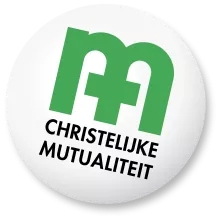Eye care prescriptions
In this section you, as an optician, will find information about the prescriptions that ophthalmologists use.

Ophthalmologists use three types of prescriptions under Article 30 of the Nomenclature.
| No. Appendix | Prescription for: |
|---|---|
| 15bis | glasses and other items (except contact lenses and eye prostheses) |
| 15ter | contact lenses |
| 15quater | eye prostheses |
Validity of prescription
A prescription is valid for six months from the date on the prescription.
You deliver the prescription to the patient, together with the certificate of delivery. Do this within:
- 3 working days;
- 21 working days for outdoor series glasses;
- 30 working days for artificial eyes and extra-series contact lenses.
In the event of force majeure, these periods may be exceeded.
Important : always note the date of receipt of the prescription on the certificate of delivery. This is important when the six months are exceeded, for example because of the delivery period. CM can request this date.
Deviation from the prescription
The prescription must be strictly followed .
You can request an abnormality or correction from the ophthalmologist by email . That is why the ophthalmologist's email address is on the prescription. This means the patient does not have to return to the ophthalmologist to have the prescription adjusted.
The ophthalmologist also answers by email. Save this email for possible checks.
In the 'Note from the optician' zone at the bottom of the prescription you can state the essence of your question and the ophthalmologist's answer.
Approvals obtained by telephone will not be accepted .
Incorrect regulations
As an optician you must check whether the prescription is correct and complete . Only then is it valid for health insurance.
If the prescription is not in accordance with the rules, CM will contact you and you must ask the ophthalmologist for correction :
- for minor errors this can be done by e-mail ;
- for major errors (e.g. an incorrect model of prescription) you must request a new prescription .
Frequently Asked Questions
Yes. All areas relating to a prescribed product must be completed (e.g. Ryser filter must be checked and the calibration box completed).
You can request the missing information from the ophthalmologist by email.
The health insurance only reimburses certain items if the patient suffers from one of the certain conditions .
The ophthalmologist must determine whether one of the indications is present in the patient. For possible checks, he keeps the evidence of the pathology in the medical file.
The ophthalmologist is responsible for the correctness of this information. That is why he must no longer mention the pathology on the prescription. It is sufficient to tick 'yes' or 'no' next to 'Medical indication'.
An ophthalmologist may prescribe progressive lenses by indicating ' bifocal', 'progressive', 'trifocal' or 'unspecified' .
- Indication 'not specified' : the patient has the free choice between bifocal, progressive or trifocal lenses.
- Designation 'bifocal', 'progressive', 'trifocal' or 'unifocal': you must deliver this prescribed correction product . You can ask the ophthalmologist for an abnormality . With trifocals, an 'intermediate vision' correction must of course be prescribed.
- Prescription 'multifocal' without further description (bifocal, progressive, etc.) or an incomplete prescription: you must request a correction from the ophthalmologist by e-mail .
Ophthalmologists are obliged to prescribe the values of the spectacle lens refraction for contact lenses (at the top of the prescription). At the bottom, that refraction is converted to the contact lens refraction.
Both the ophthalmologist and you can perform this conversion:
- tick;
- date, signature and stamp;
- Under the contact lens refraction, state the specifications of the contact lenses (right and left eye) .
The rules of nomenclature are applied based on the spectacle lens refraction . CM therefore bases itself on these values.
Prescription frame
CM will reimburse a maximum of two frames for children under the age of 18. No prescription is required for this.
There is no refund for adults.
Prescription eye patches
Occluders with micropores (eye patches) are used to train a lazy eye. A box contains approximately fifty units . The treatment usually requires more plasters.
What are the conditions?
- CM will refund a maximum of four boxes .
- A separate prescription is required for each box, because the refund is per box.
- You can deliver a maximum of two boxes at the same time.

